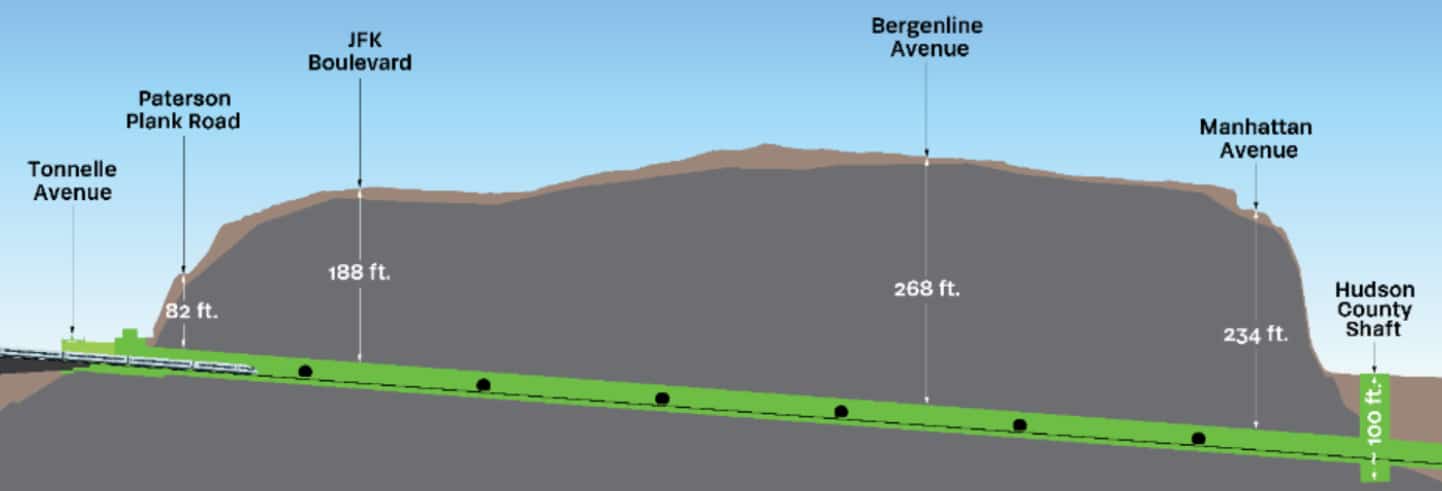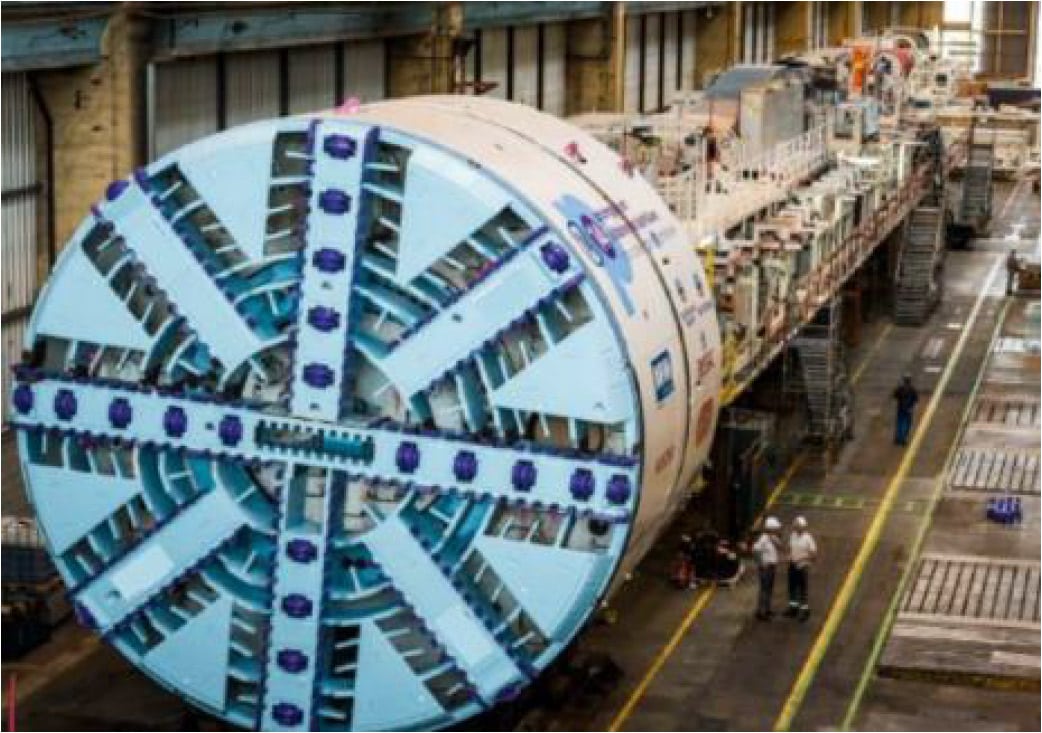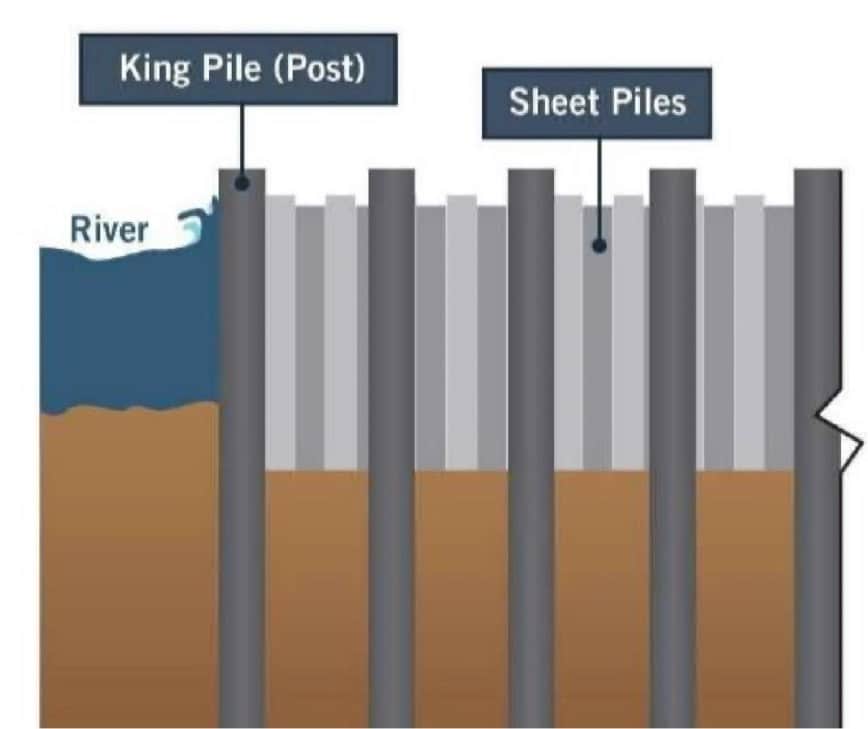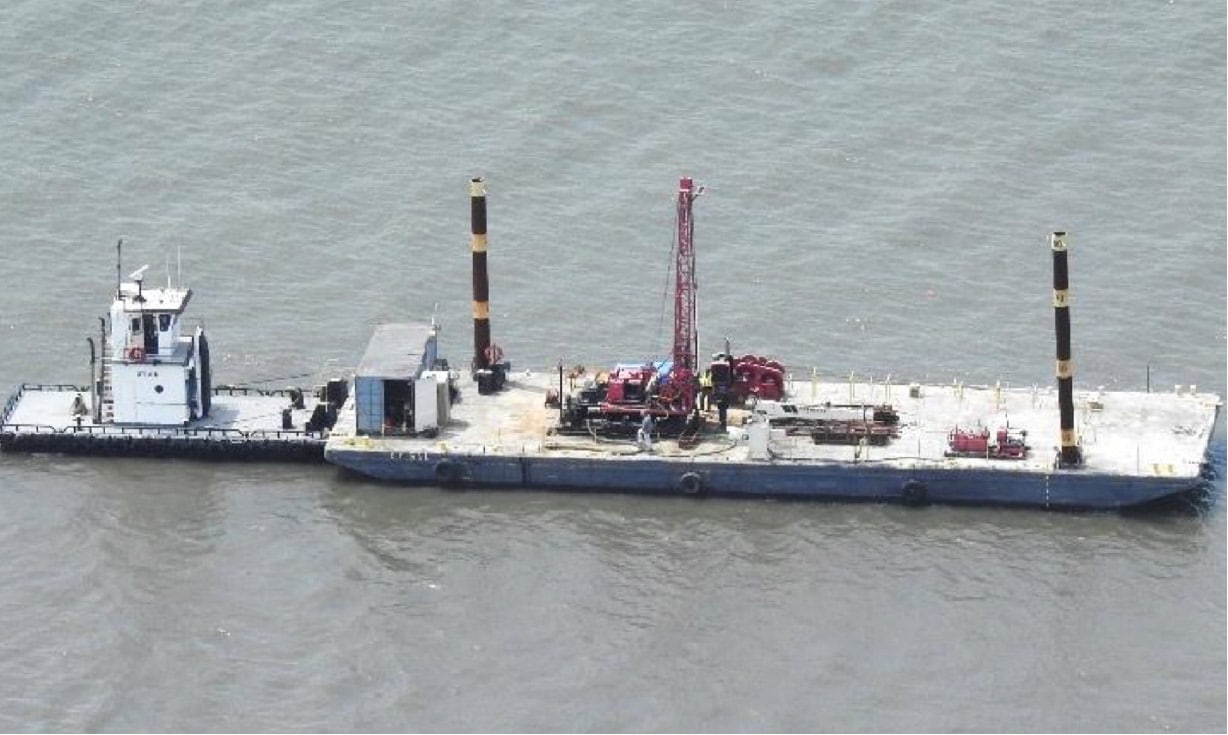A contractor has been chosen to build the New Jersey segment of a train tunnel linking the Garden State to New York City.
On August 1, the Gateway Development Commission (GDC) Board of Commissioners announced the awarding of the $456.6-million Palisades Tunnel Project contract to Schiavone Dragados Lane JV. This marks the first contract awarded for the Hudson Tunnel Project (HTP), which will establish a new rail tunnel between New York and New Jersey.
Construction on the Palisades Tunnel Project is slated to commence in the coming months, with completion expected by 2027.
Schiavone Dragados Lane JV will be responsible for constructing the initial mile of twin-tunnels on the New Jersey side of the Hudson River, part of the Palisades Tunnel Project. This will involve boring two tunnels approximately 5,100 feet long, each with an inside diameter of 25 feet 2 inches, and constructing six cross passages. Additionally, the contractor will install a concrete tunnel lining with a waterproofing membrane and build the Hudson County Shaft, which will be used to extract the tunnel boring machines once excavation is complete.

Photo courtesy of The Gateway Program) Rendering of the route for the Palisades Tunnel Project.
In a joint statement, Alicia Glen, New York GDC Commissioner and Co-Chair, Balpreet Grewal-Virk, New Jersey GDC Commissioner and Co-Chair, and Tony Coscia, GDC Amtrak
Commissioner and Vice Chair, said, “When we signed the full funding grant agreement for the Hudson Tunnel Project in July, we said that construction would ramp up quickly. Today we are following through on that commitment with dramatic steps forward for our first heavy construction and tunnel boring projects. Advancing both of these projects is a major step in the construction phase of the HTP, and we will maintain the disciplined process that enabled this achievement.”
The federal government has allocated nearly $11 billion through the Federal Transit Administration’s Capital Investment Grants (CIG) program and Railroad Rehabilitation and Improvement Financing (RRIF) loans via the DOT’s Build America Bureau to aid in the tunnel’s construction and the rehabilitation of the existing North River Tunnel. The CIG funding, amounting to nearly $6.9 billion, represents the largest grant ever awarded by the FTA.
“For decades, Americans watched one of the most heavily used train tunnels in the hemisphere deteriorate and become a bottleneck that affected travelers from New England to the Mid-Atlantic and beyond,” said U.S. Transportation Secretary Pete Buttigieg. “…Using funds from the [Bipartisan Infrastructure] Law we are building a new tunnel that improves train travel for millions of Americans and revitalizes a rail corridor that is essential to so much of the nation’s economy. And as one of the cathedrals of American infrastructure, this project can demonstrate America’s capacity to build big things together in the 21st Century.”

(Photo courtesy of The Gateway Program) A tunnel boring machine similar to the machines that will be used to dig the Palisades Tunnel.
The GDC Board of Commissioners has also authorized a Notice to Proceed for Phase Two of the Hudson River Ground Stabilization (HRGS) Project, the first significant construction effort of the HTP. Phase One of the HRGS Project began in May and is expected to conclude this fall, with Phase Two slated for completion by 2027.
Weeks Marine, Inc. is leading the HRGS Project, which involves injecting a mixture of soil, concrete, and water into a 1,200-foot section of the shallow riverbed on the Manhattan side of the Hudson River. This process will ensure the tunnel boring machines can safely excavate the new tunnel while protecting the riverbed from disturbance. Temporary sheet pile cofferdams will enclose the work zone, with construction timed to avoid disrupting fish spawning seasons, minimizing the impact on the river ecosystem.
The Hudson Tunnel Project is a critical element of the broader Gateway Program, designed to bolster resiliency and capacity along a vital 10-mile segment of the Northeast Corridor (NEC) between Newark, New Jersey, and New York City’s Pennsylvania Station (PSNY).
The NEC is the busiest passenger rail line in the United States, with over 2,000 intercity and commuter trains transporting approximately 800,000 passengers daily across eight states and Washington D.C. The 10-mile section targeted by the Gateway Program includes the North River Tunnel under the Hudson River, which has suffered from age-related wear, heavy usage, and saltwater damage during Hurricane Sandy in 2012.
The HTP is projected to create 95,000 jobs and generate $19.6 billion in economic activity, according to a report released in April by the Regional Plan Association (RPA).

(Photo courtesy of The Gateway Program) Rendering of HRGS stabilizing columns
“The $1 billion in construction contracts we’ve awarded so far are already creating thousands of jobs and pumping millions of dollars into the economy, and it’s only the beginning,” GDC CEO Kris Kolluri said when the RPA report was released. “Now this report shows the overall impact of the project will be even greater than we thought, and that the Hudson Tunnel Project is a big win for the region and the nation.”
America’s roads, bridges, and mass transit systems received a D rating in the latest Report Card for America’s Infrastructure by the American Society of Civil Engineers (ASCE).
In their findings, the ASCE emphasized a “backlog of rehabilitation needs,” urging that “Federal, state, and local governments must prioritize strategic investments to improve and preserve roadway conditions that enhance public safety on existing systems while also preparing for future roadways that will accommodate connected and autonomous vehicles.”
How SiteMap® Supports Infrastructure Projects
The Bipartisan Infrastructure Law earmarks $550 billion in new federal investments for fiscal years 2022-2026, focusing on roads, bridges, mass transit, water infrastructure, resilience, and broadband. In addition, the Inflation Reduction Act allocates over $5 billion through September 2026 for three new FHWA programs: the Neighborhood Access and Equity Grant Program, the Low-Carbon Transportation Materials Grants, and the Environmental Review Implementation Funds program.
With this influx of federal funding comes an intensified emphasis on ensuring these projects are completed on time, within budget, and safely.
GPRS provides a comprehensive suite of services for subsurface damage prevention, existing conditions documentation, and construction & facilities project management to help you achieve these objectives.
We employ state-of-the-art technology, including ground-penetrating radar (GPR) scanners, electromagnetic (EM) locators, 3D laser scanners, and remote-controlled sewer pipe inspection rovers, to protect your buried infrastructure and prevent subsurface damage during excavation. Our in-house Mapping & Modeling Team converts the field-verified, precise data collected by our SIM and NASSCO-certified Project Managers into a format that supports your planning and operations & maintenance (O&M) requirements.

(Photo courtesy of The Gateway Program) HRGS construction barge working in the Hudson River.
This data is available to you and your team 24/7 from any computer, tablet, or smartphone through SiteMap® (patent pending), our project & facility management application, providing accurate existing conditions documentation to safeguard your assets and personnel.
GPRS SiteMap® team members are currently scheduling live, personal SiteMap® demonstrations. Click below to schedule your SiteMap® demos today.
Frequently Asked Questions
What are the Benefits of Underground Utility Mapping?
Having an updated and accurate map of your subsurface infrastructure reduces accidents, budget overruns, change orders, and project downtime caused by dangerous and costly subsurface damage.
How does SiteMap® assist with Utility Mapping?
SiteMap®, powered by GPRS, is the industry-leading infrastructure management program. It is a single source of truth, housing the 99.8%+ accurate utility locating, concrete scanning, video pipe inspection, leak detection, and 3D laser scanning data our Project Managers collect on your job site. And the best part is you get a complimentary SiteMap® Personal Subscription when GPRS performs a utility locate for you.
Click here to learn more.
Does SiteMap® Work with my Existing GIS Platform?
SiteMap® allows for exporting of data to SHP, GeoJSON, GeoPackage, and DXF directly from any user’s account that either owns or has a job shared to their account. All these file formats can be imported and utilized by other GIS packages if manually imported by the user. More information can be found at SiteMap.com.
